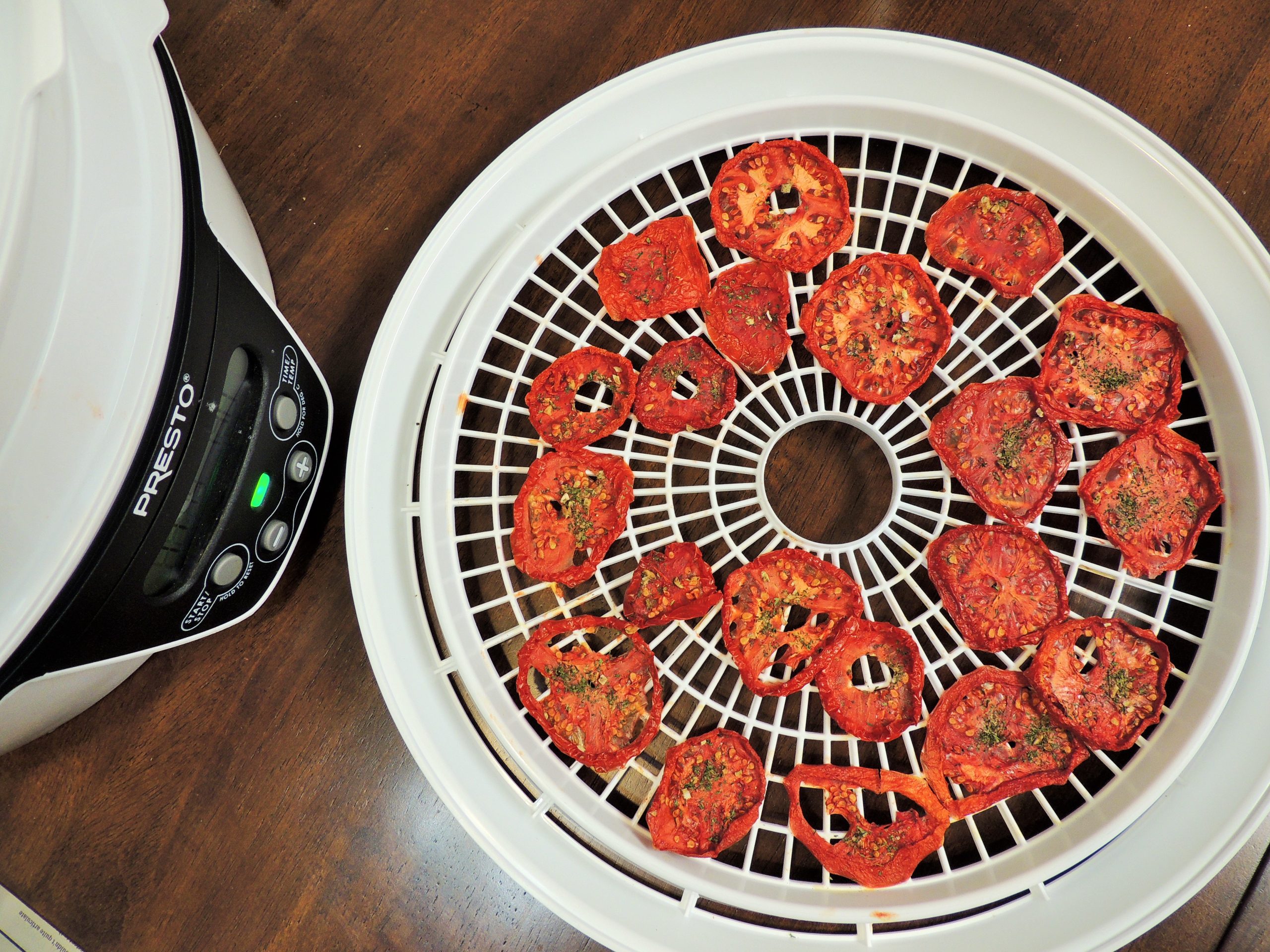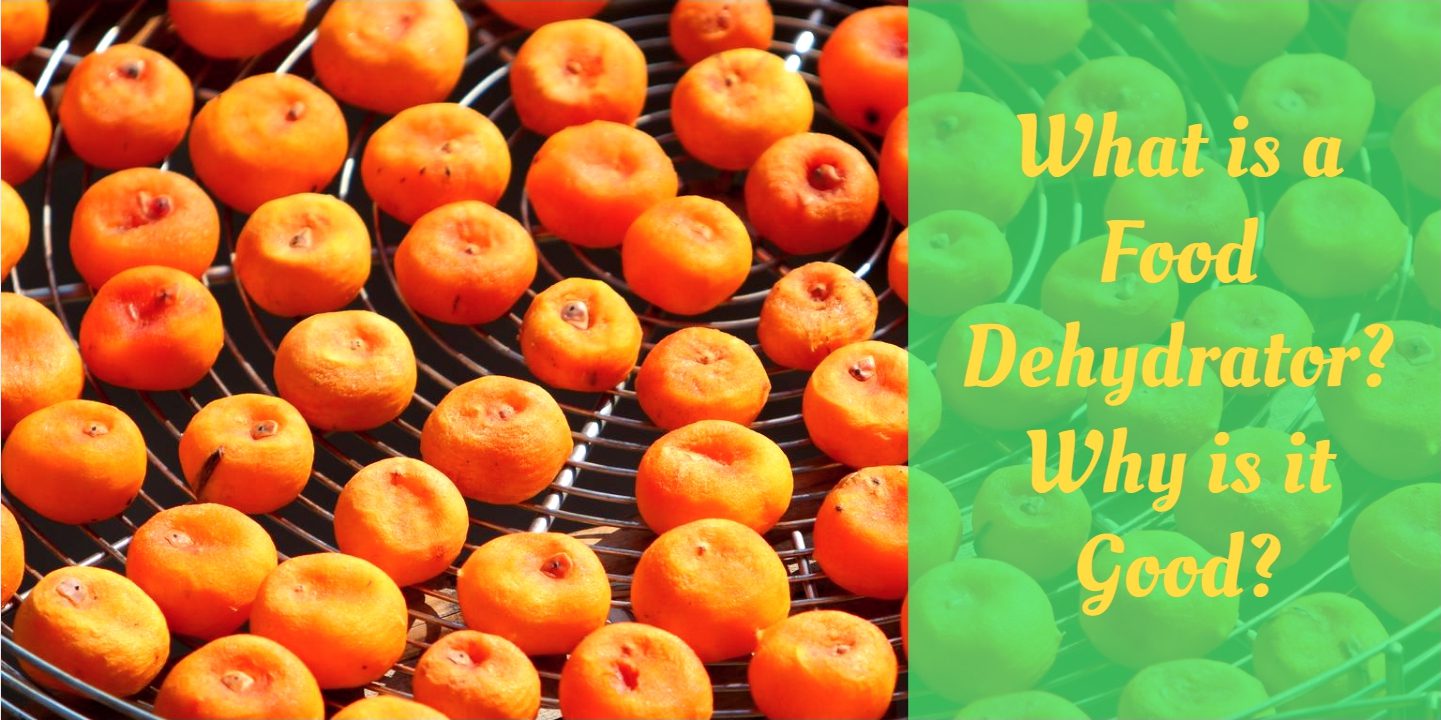Ever dreamt of ditching sugary snacks for healthy, portable options? Well, you’re in for a treat!
We’re here to explain what is a food dehydrator and why is it good for you. A nice dehydrator is a gateway to a world of culinary experiments and healthy snacks.
Imagine juicy strawberries transformed into sweet and chewy fruit leather, ideal for on-the-go snacking. Or crisp, flavorful veggie chips made without sodium and all that. This is just a glimpse of what such appliances can do. Let’s get started!
Ready to buy? Choose a food dehydrator for home use here!
What is a Food Dehydrator?
Imagine a kitchen appliance that can transform fresh, juicy produce into shelf-stable, intensely flavorful snacks, all while preserving nutrients and extending their lifespan. That’s the magic of a food dehydrator!
Essentially, a food dehydrator is a countertop device that draws liquid from food using gentle heat and air circulation. This process mimics the natural drying power of the sun but with more control and efficiency. By lowering the water content, food dehydrators form a condition where bacteria and mold can’t thrive, preventing spoilage and prolonging the life of your fave foods.

You may also like: 11 Basic Vegetables With Different Storage Conditions
The Purpose Of Food Dehydrating
Food dehydration serves a multitude of purposes, both practical and culinary:
- Preservation: Dry food has a longer life than fresh one, making it ideal for keeping seasonal items and raising the enjoyment of your favorite foods.
- Flavor Concentration: As water evaporates during dehydration, flavors become more concentrated, creating intensely flavorful snacks and culinary creations. Imagine the burst of sweetness in sun-dried tomatoes or the satisfying crunch of veggie chips.
- Portability: Dehydrated food is incredibly lightweight and portable, making it perfect for camping, backpacking, or simply having healthy snacks on the go.
- Waste Reduction: Dehydration provides a sustainable solution to reduce food waste. By dehydrating wilting produce or food scraps, you can maximize the use of your food and minimize unnecessary waste.
Culinary Creativity: Dehydration opens doors to endless culinary possibilities. Experiment with dips and sauces for unusual flavors, make your own spice blends, or even create edible garnishes.
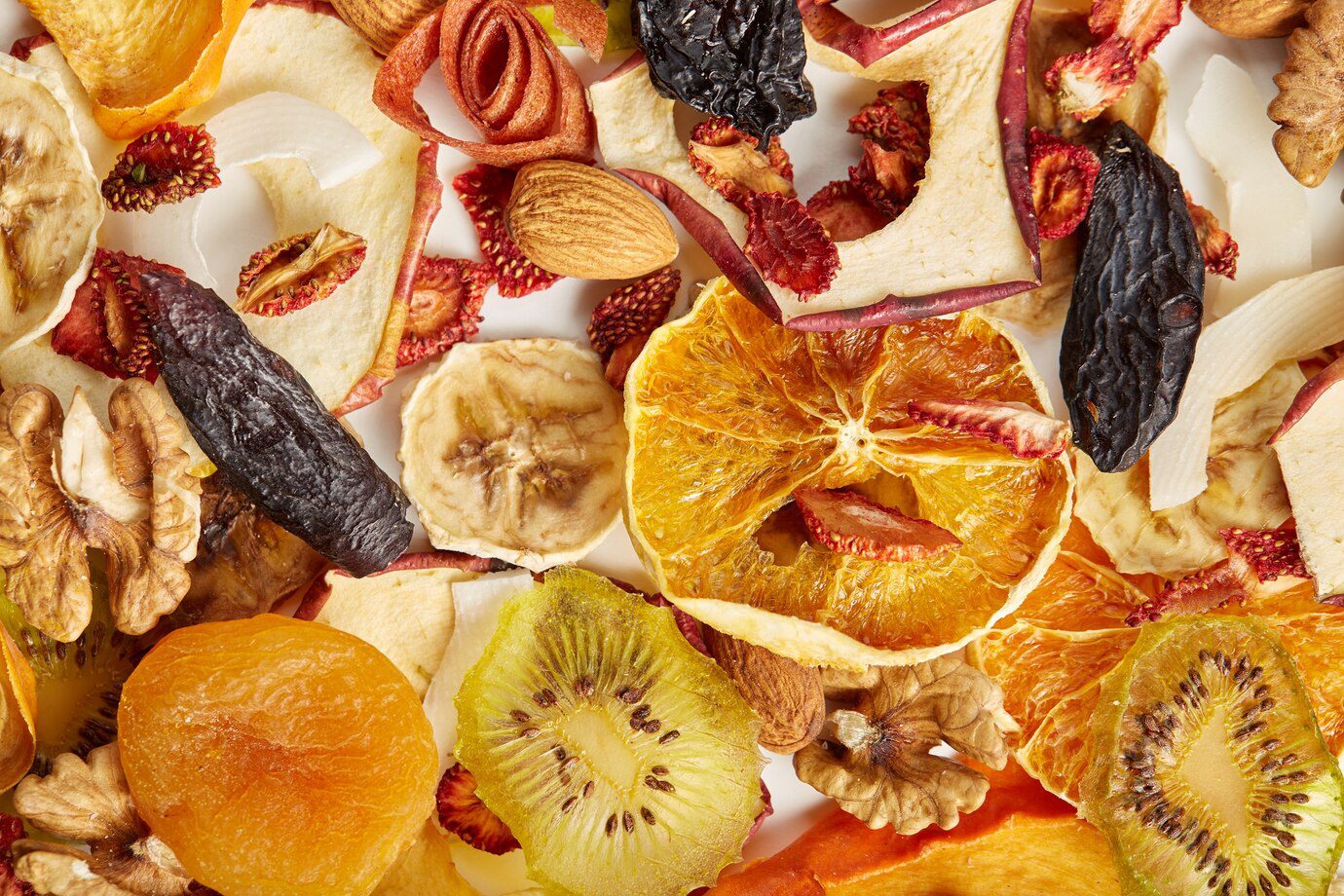
How Does a Food Dehydrator Work?
Dehydration works by lowering the water content of food to a level where bacteria and mold can’t grow. This method can be traced back to ancient times when people sun-dried fruits, vegetables, and meats to preserve them for the winter months. Today, these tools use a more controlled and efficient method, typically employing:
- A heating element: This generates the low heat needed to evaporate water from the food.
- A fan: This circulates the warm air, ensuring even drying throughout the food.
- Stacked trays: These hold the food in thin, even layers to maximize air circulation and drying efficiency.
- A thermostat: This controls the temperature to prevent burning or over-drying.
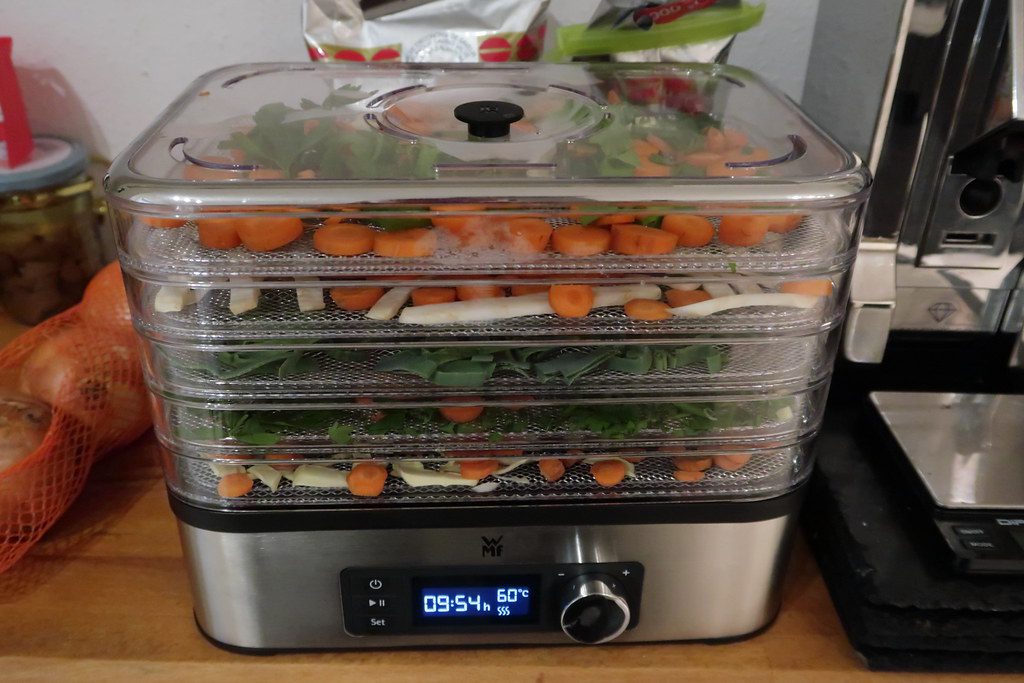
Types Of Food Dehydrators
There are two main types of dehydrators:
- Convection dehydrators: The budget-friendly champions, these workhorses utilize a fan to circulate warm air horizontally across stacked trays. Great for beginners, ideal for whipping up veggie crisps or drying your garden bounty.
- Excalibur dehydrators: Known for their premium price tag and devoted following, these employ a vertical airflow design. Their quiet operation, precise temp control, and durable construction make them ideal for frequent dehydrating adventures and experimenting with various foods.
- Stackable: Flexibility is their middle name! These modular marvels let you add trays as your needs and skills evolve. Starting small? Begin with a few trays and gradually expand your dehydrating empire. Ideal for those who want to test the waters or envision larger batches in the future.
- Stainless Steel: Durability and cleaning ease are their superpowers. These high-end models boast sturdy construction and the dishwasher-safe convenience of stainless steel trays and parts. If you prioritize longevity and effortless cleanup, these dehydrators might be your culinary knight in shining steel.

Choosing the Right Dehydrator:
When choosing a food dehydrator, consider the following factors:
- Budget: Dehydrators range in price from around $50 to $300 or more.
- Family size: If you have a large family, you may need a dehydrator with more capacity.
- Types of food: Some dehydrators are better suited for certain types of food than others.
- Features: Some dehydrators have additional features, such as a timer, adjustable temperature settings, and multiple trays.
Beyond the Basics:
- Temp Control: Adjustable temp settings offer greater control over drying different foods and achieving desired textures.
- Timer: A built-in timer lets you set and forget, ensuring even drying without overdoing it.
- Digital Display: Easy-to-read digital displays provide helpful information like temperature, timer, and even remaining drying time.
- Number of Trays: More trays translate to larger capacity, but consider your available counter space and typical batch sizes.
- Tray Material: Look for BPA-free plastic or stainless steel trays for durability and ease of cleaning.

Check also: 7 Best Vegetable Choppers (Dishwasher Safe List)
Benefits Of A Food Dehydrator
While preserving food is a core function, the benefits go deeper.
- Nutrient Powerhouse: Unlike canning or freezing, dehydration retains more nutrients, offering a healthy and delicious way to enjoy your favorite foods year-round.
- Lightweight and Portable: Perfect for backpacking, camping, or simply stashing healthy snacks in your purse. Enjoy the goodness of fruits and vegetables on the go!
- Reduced Food Waste: Don’t let your garden’s bounty go to waste! Dehydration extends the shelf life, saving you money and reducing your environmental impact.
- Customizable Control: Control the drying process to achieve your desired textures and flavors, unlike store-bought snacks often laden with additives and preservatives.
- Year-Round Enjoyment: Savor the peak flavors of seasonal fruits and vegetables all year long by capturing their essence through dehydration.
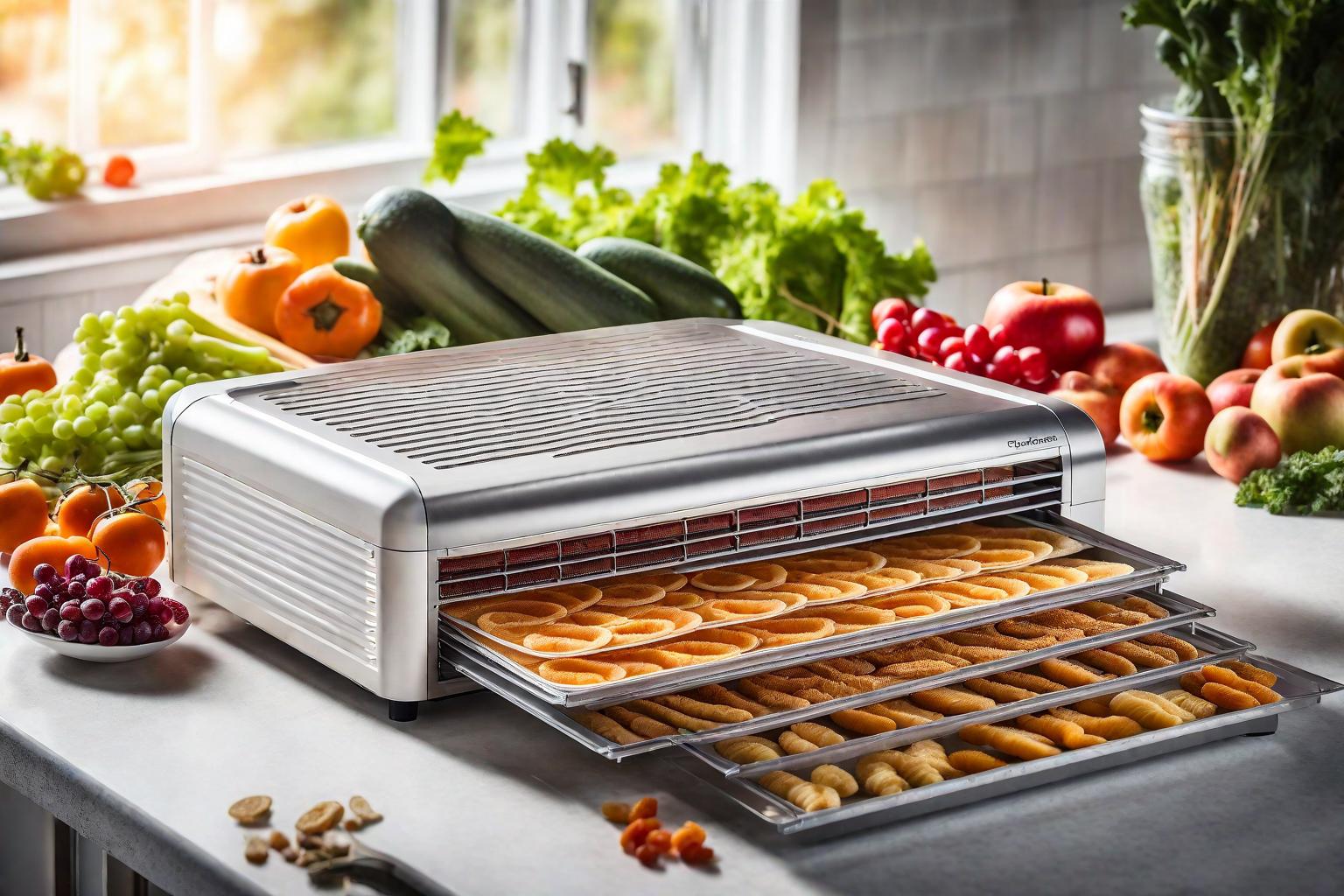
Don’t pay too much for a dehydrator! Choose a budget option to start!
Disadvantages Of A Food Dehydrator
Nothing is perfect, and there are some things that may be considered cons when it comes to dehydrators as well.
- Investment: Dehydrators range in price, but even budget-friendly options require an initial financial commitment.
- Countertop takeover: They occupy valuable counter space, so ensure you have room for this new appliance.
- Patience is key: Dehydration is a slow process, requiring time and planning for optimal results.
- Learning curve: Experimentation is necessary to master different drying times and techniques for various foods.
- Not everything dehydrates well: Some foods, like dairy products and meats, aren’t ideal candidates for dehydration.
What Can You Dehydrate?
The list is truly endless! Here are some popular options to get you started:
- Fruits: Apples, bananas, berries, mangoes, peaches, and more.
- Vegetables: Bell peppers, tomatoes, zucchini, carrots, mushrooms, and leafy greens.
- Herbs and spices: Basil, oregano, rosemary, thyme, and chili peppers.
- Meats and seafood: Beef, chicken, salmon, and shrimp (for jerky and savory treats).
- Grains and nuts: Rice, quinoa, oats, almonds, and cashews (for crunchy additions to granola and trail mix).

Tip For Using A Food Dehydrator
While these tools are quite easy to operate, there are some tips to help you out:
- Slice foods thin and even: This ensures uniform drying and prevents burnt edges.
- Start low: Beginners should start with lower temps and longer drying times to avoid overdoing it. Adjust as you gain experience.
- Space it out: Don’t crowd the trays! Leave enough space between slices for optimal airflow and even drying.
- Preheat your dehydrator: A warm welcome prevents bacteria growth.
- Rotate the trays: Even air circulation is key to consistent drying.
- Check regularly: Drying times vary, so keep an eye on your food to avoid over-drying.
- Store it right: Airtight containers in a cool, dark place are your dehydrated food’s best friends.
- Know your limits: Not everything dehydrates well. Avoid oily or fatty foods, as they can spoil quickly
- Marinade: Briefly marinate fruits or vegetables for deeper flavor penetration. Just pat them dry before dehydrating.
Beyond the Basics:
- Experiment with thickness: Explore different slice thicknesses to see how they affect texture and drying time.
- Get creative: Dehydrate beyond the usual suspects! Try edible garnishes, fruit leathers with surprise ingredients, or even dehydrated yogurt bites.
- Join the community: Online forums and groups offer a wealth of inspiration, troubleshooting tips, and fellow dehydrator enthusiasts to share the journey with.
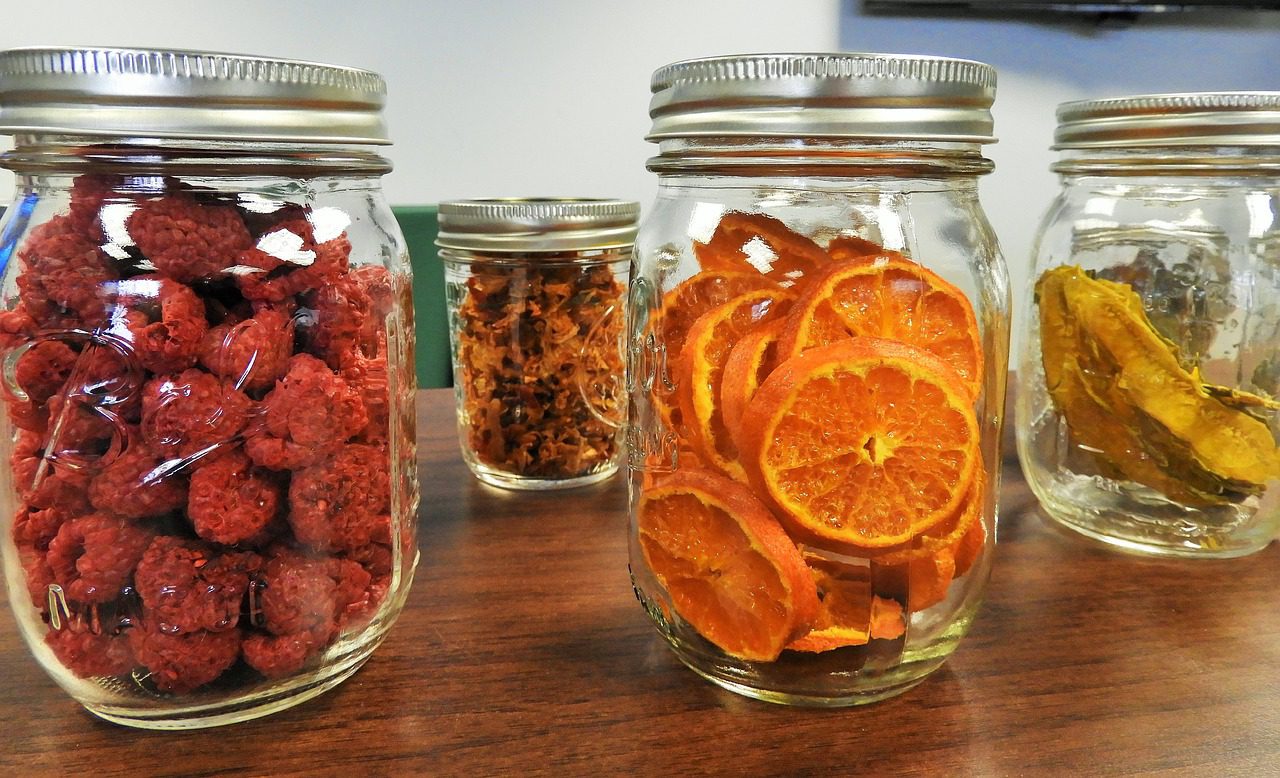
You may also check: 7 Best Vegetable Shredders Reviews
Do You Need A Food Dehydrator?
Before you hit “add to cart,” ask yourself:
- Do you have a consistent source of fresh produce to preserve?
- Are you an avid snacker seeking healthier alternatives?
- Do you enjoy experimenting in the kitchen and exploring new culinary territory?
- Are you comfortable with a hands-on approach and willing to invest time in learning?
- Do you have space in your kitchen and budget for this new appliance?
If you answered “yes” to most of these questions, then a food dehydrator could be your new best friend! However, if you’re an occasional snacker with limited counter space and minimal interest in culinary exploration, it might not be the best investment.
Remember, a food dehydrator is a tool, not a magic wand. Its value lies in your willingness to use it, experiment, and discover the joys of creating delicious and healthy food from scratch. So, weigh the pros and cons, assess your culinary habits, and decide if it is the key to unlocking your culinary dreams!
